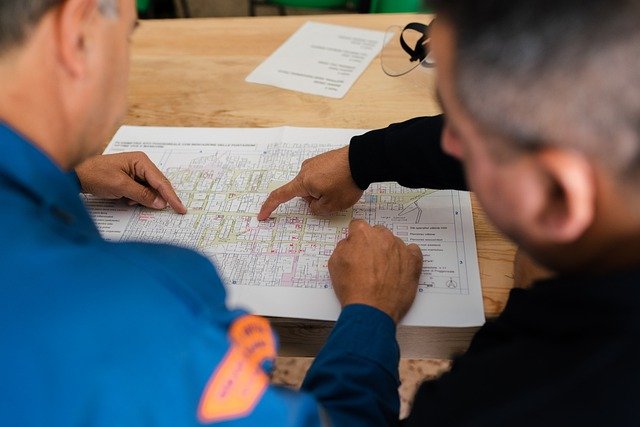
Explained
What are the Subdivisions of Civil Engineering?
Read a summary using the INOMICS AI tool
Civil engineering is a branch of engineering that deals with the design and construction of buildings, roads, bridges, and other large-scale structures. It is an established profession that has existed since the establishment of the first permanent human settlements. Within the civil engineering profession, there are many subdisciplines to specialise in, including:
- Municipal and Urban Engineering
- Transportation Engineering
- Construction Engineering
- Structural Engineering
- Water Resources Engineering
- Coastal Engineering
- Earthquake Engineering
- Environmental Engineering
- Geotechnical Engineering
Suggested Opportunities
- Researcher / Analyst Job
- Posted 1 week ago
Procurement Officer for Civil Engineering and Construction (IPT-PI-CE-2026-4-LD)
At CERN in Genève, Switzerland- Practitioner / Consultant Job
- Posted 13 hours ago
CIVIL TECHNICIAN
At Conrad Consulting in Hertford, United KingdomMunicipal and Urban Engineering
Municipal and urban engineering deals with the design of basic municipal infrastructure such as streets, sidewalks, sewers, street lighting, and solid waste management. Engineers working in municipal and urban engineering may also be responsible for designing and maintaining public parks and underground utility lines. Every aspect of municipal public infrastructure, including waste collection networks and bridges, are influenced in some way by municipal and urban engineers.
Transportation Engineering
Transportation engineering involves the design of transportation systems such as highways, roads, and public transportation networks. The operation and maintenance of these transportation systems, as well as an understanding of traffic control systems, are also part of the responsibilities of a transportation engineer.
 Construction Engineering
Construction Engineering
Construction engineering involves the planning and management of the entire construction process. Knowledge of construction processes is required to work in this field, along with the business, management, and economic sides of a construction project. Construction engineers must also be able to schedule and manage resources throughout a project. This task includes the logistics of scheduling workers, equipment, and materials throughout the lifecycle of a project, which can be anything from a highway to a high-rise building.
Structural Engineering
Structural engineering involves the design of small and large structures to ensure they can withstand the stresses and pressures of their environments and remain safe for use throughout their lifecycle. An understanding of building physics and statics, along with local building design codes, are required to work in the discipline. Structural engineers can work on various kinds of structures, including skyscrapers, bridges, and tunnels.
Water Resources Engineering
Water resource engineering deals with the management of water supplies essential to everyday life. An important characteristic that a water resources engineer must have is an understanding of basic water processes so a clean supply of water can be used for drinking and living. Not only do water resource engineers deal with drinking water supplies, they also deal with the protection of water bodies, soil, and groundwater. Some tasks related to water resource engineering include the design of culverts and dams as well as erosion protection works along river banks.
Coastal Engineering
Coastal engineering involves the management and maintenance of coastal areas with an emphasis on protection against flooding and erosion along the shoreline. Coastal engineers must have knowledge in the areas of oceanography and marine geology. This knowledge helps them to gain an understanding of the interactions between the salt water and coastal structures. Coastal engineers also design systems that harness the power of ocean waves moving towards a shoreline to generate energy. These systems work because the momentum associated with the movement of the wind creates a piezoelectric effect that can be harvested via an energy harvester.
Earthquake Engineering
Earthquake engineering involves working to reduce seismic hazards in areas prone to earthquakes. To pursue a career as an earthquake engineer, one must study earth sciences and the design and construction of structures to withstand earthquakes. Additionally, earthquake engineers must learn to locate the source of an earthquake and understand how a structure responds to an earthquake. Some of the tasks that earthquake engineers must do are occurrence modelling of the frequency of earthquakes, geophysical modelling, and ground-motion modelling.
Environmental Engineering
Environmental engineering deals with protecting the public from destructive environmental effects as well as protecting the environment from the impacts of human activity and climate change. Environmental engineers may deal with water and air pollution control, recycling processes, waste disposal, as well as soil contamination and large-scale farming.
-
- Professional Training Course
- (Online)
- Posted 6 years ago
Foundations for Data Science
at Stanford University in United States
-
- Master's Program
- Posted 1 week ago
MSc/PhD in Economics (IDEA) - Barcelona
Starts 1 Sep at Universitat Autònoma de Barcelona in Barcelona, Spain
-
- Master's Program
- Posted 1 week ago
Master of Science in Applied Economics
at University of Neuchâtel in Neuchâtel, Switzerland











